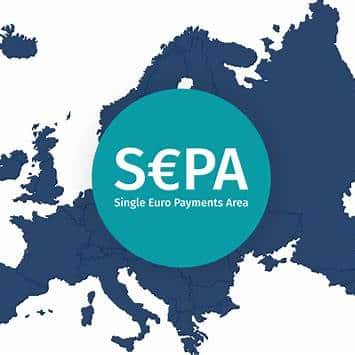Electronic payments are evolving — and SEPA (Single Euro Payments Area) credit transfers are no exception. From 9 October 2025, a major new rule kicks in across the euro-area: banks and payment service providers (PSPs) must perform a Verification of Payee (VoP) check before executing a transfer.
This change is designed to reduce fraud, prevent misdirected payments, and bolster trust in digital euro payments. Below is an overview of how VoP works, what changes for businesses and payers, and steps you should take to stay compliant and smooth in your payments process.
What is Verification of Payee (VoP)?
- VoP means that when you (the payer) initiate a SEPA credit transfer (ordinary or instant), your bank will check whether the name you entered for the payee matches the IBAN/account name as held by the recipient bank.
- The response is immediate (or near-immediate) and gives one of several outcomes:
• Match (name and IBAN align)
• Close match (minor differences, e.g. abbreviations, slight variations)
• No match
• Verification not possible (e.g. recipient bank not yet ready or data missing) - Depending on the result, the payer will be alerted (for example, “No match — are you sure you want to proceed?”) or asked to correct the payee name.
- The VoP requirement covers both SEPA Credit Transfers (SCT) and SEPA Instant Credit Transfers (SCT Inst).
VoP is mandated under the EU Instant Payments Regulation (IPR), which amends SEPA rules to require name checks for credit transfers.
What changes for businesses, payers, and file processing
For payers
- You’ll need to ensure the payee name you enter matches the official name registered with the recipient’s bank. Otherwise, you may see warnings or be asked to revise.
- In most cases payments will still go through if there is a “Close match” or even “No match” (if you choose to proceed), but the feedback helps you avoid errors or fraud.
- The user interface (online banking, mobile app) must show the VoP response before confirming the transaction.
For businesses
- Bulk payment files will need special handling. While VoP was originally designed for single transactions, the regulation applies to bulk payments too.
- Some organisations may be allowed to opt out of VoP for their bulk files to avoid friction, but then they must accept associated risks.
- For unsigned (i.e. not pre-approved) payment files, the VoP check must be completed before execution. For signed files, partial processing (processing matching ones, flagging mismatches) may be allowed.
- You will receive VoP feedback via your banking channel, Payment Status Reports (e.g. pain.002), or via API if integrated.
What you should do now (Parolla’s advice)
- Audit your payee name data
- Ensure the payee names in your system (vendors, customers) exactly match how the recipient bank holds them.
- Include full legal entity names, avoid abbreviations where possible, be consistent.
- Design internal exception workflows
- Define rules: e.g. “if close match, auto accept,” or “if no match, flag for manual review.”
- Train staff on investigating mismatches (e.g. confirm with payee, check duplicate records, etc.)
- Test well ahead of October 2025
- Coordinate with your bank or PSP to test VoP in a sandbox or pilot.
- Validate how mismatches are reported, how to resolve them, timing, exception flows.
- Communicate with payees/vendors
- Inform your suppliers and clients that they should ensure their account names as they appear to banks are accurately captured in your system.
- If you send invoices, request that the legal name matches banking records.
- Monitor responses / reject rates
- After implementation, keep an eye on how many payments are flagged or need manual intervention.
- Use that feedback to refine your name matching rules and data hygiene.
In summary
The introduction of Verification of Payee is one of the most significant evolutions in SEPA credit transfers in recent years. It adds a name-IBAN matching check before many transfers are executed, to guard against fraud and mistakes. For businesses (like many of Parolla’s clients), this means adjusting your payment systems, refining payee name data, and developing workflows for handling mismatches.
While the changes require effort, they also bring real benefits: fewer payment errors, better security, and greater trust in your euro payments. If you’d like help assessing your systems, running test scenarios, or integrating VoP checks, Parolla is ready to assist.
Bank of Ireland – Verification of Payee (VOP)
https://personalbanking.bankofireland.com/ways-to-bank/mobile-banking/verification-of-payee-vop/ Bank of Ireland
and for bulk payments:
https://businessbanking.bankofireland.com/payments-and-cards/online-banking/sepa/sepa-instant/verification-of-payee-vop-bulk-payments/ Bank of Ireland Business Banking
AIB – Verification of Payee (VoP)
https://aib.ie/business/ways-to-bank/vop AIB
Also their overview of VoP service:
https://aib.ie/international-sepa-payments-explained/vop AIB
